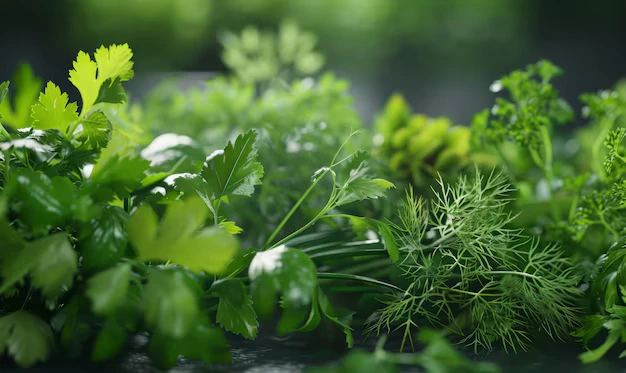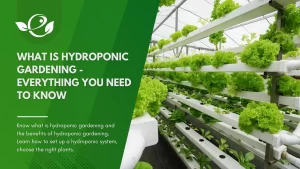Table of Contents
Gardening in Texas is a unique adventure, especially during winter. With its vast size and varying climate zones, the Lone Star State provides gardeners with the opportunity to cultivate fresh vegetables year-round. Winter gardening in Texas isn’t just about keeping plants alive through cooler months—it’s about thriving crops, sustainable harvests, and using the mild weather to your advantage. Whether you’re in frost-prone North Texas or the warm South, this guide will help you choose the perfect vegetables, plant them at the right time, and ensure a bountiful winter harvest.
Understanding Texas’s Winter Climate for Gardening
Why Winter Gardening Works in Texas?
Texas’s winters are characterized by mild temperatures, making it ideal for growing cool-season crops. The state’s USDA hardiness zones (6-10) support various vegetables that thrive in cooler conditions. Understanding your region’s frost dates and microclimates ensures successful planting.
Preparing Your Garden for Winter Planting
- Soil Preparation:
- Test soil pH and nutrient levels.
- Enrich with compost and organic matter to enhance fertility and drainage.
- Temperature Regulation:
- Apply mulch to insulate roots and regulate soil temperature.
- Install row covers to protect seedlings from unexpected frosts.
Top Winter Vegetables to Plant in Texas
Winter gardening in Texas offers the opportunity to grow a variety of vegetables suited to the state’s mild climate. Below is an expanded guide detailing when to plant, recommended varieties, and when to provide frost protection for the most popular winter crops.
Leafy Greens
Kale, Spinach, Lettuce, and Swiss Chard
- When to Plant:
Direct seed or transplant in late September to mid-November. - Recommended Varieties:
- Kale: ‘Lacinato,’ ‘Red Russian.’
- Spinach: ‘Bloomsdale,’ ‘Tyee.’
- Lettuce: ‘Romaine,’ ‘Butterhead,’ ‘Salad Bowl.’
- Swiss Chard: ‘Bright Lights,’ ‘Fordhook Giant.’
- When to Cover: Protect with frost covers if temperatures drop below 20°F, especially for young plants.

Root Vegetables
Carrots, Radishes, Beets, and Turnips
- When to Plant:
Sow seeds directly from late September to early November. - Recommended Varieties:
- Carrots: ‘Danvers,’ ‘Nantes.’
- Radishes: ‘Cherry Belle,’ ‘French Breakfast.’
- Beets: ‘Detroit Dark Red,’ ‘Golden.’
- Turnips: ‘Purple Top,’ ‘Hakurei.’
- When to Cover: Cover seedlings during frosts; mature roots are generally hardy but benefit from mulch.

Alliums
Onions, Garlic, and Shallots
- When to Plant:
Plant onion sets or garlic cloves from mid-October to early December. - Recommended Varieties:
- Onions: ‘Texas 1015Y,’ ‘Red Creole.’
- Garlic: ‘Softneck,’ ‘Silverskin.’
- Shallots: ‘French Red,’ ‘Gray Griselle.’
- When to Cover: Use row covers for prolonged freezes to ensure steady growth.

Brassicas
Broccoli, Cauliflower, Cabbage, and Brussels Sprouts
- When to Plant:
Transplant seedlings in early October for Central and South Texas, and mid-September for North Texas. - Recommended Varieties:
- Broccoli: ‘Waltham 29,’ ‘Green Magic.’
- Cauliflower: ‘Snowball,’ ‘Amazing.’
- Cabbage: ‘Golden Acre,’ ‘Savoy.’
- Brussels Sprouts: ‘Jade Cross,’ ‘Diablo.’
- When to Cover: Protect young plants from frost, as they are sensitive until established.

Legumes
Peas and Fava Beans
- When to Plant:
Sow seeds from mid-October to mid-November. - Recommended Varieties:
- Peas: ‘Sugar Snap,’ ‘Lincoln.’
- Fava Beans: ‘Aquadulce,’ ‘Windsor.’
- When to Cover: Use frost covers when temperatures fall below 25°F to prevent flowering delays.

Cool-Weather Herbs
Cilantro, Dill, and Parsley
- When to Plant:
Direct seed or transplant in late October. - Recommended Varieties:
- Cilantro: ‘Slow Bolt,’ ‘Cruiser.’
- Dill: ‘Bouquet,’ ‘Dukat.’
- Parsley: ‘Italian Flat Leaf,’ ‘Curly Leaf.’
- When to Cover: Protect with lightweight covers if frost is expected, particularly for young seedlings.

Here’s a comprehensive table summarizing the planting and care information for each crop:
| Crop | Planting Time | Recommended Varieties | Frost Protection |
|---|---|---|---|
| Kale | Late Sept – Mid Nov | ‘Lacinato,’ ‘Red Russian’ | Cover if temps drop below 20°F. |
| Spinach | Late Sept – Mid Nov | ‘Bloomsdale,’ ‘Tyee’ | 15 degrees or below, Frost-hardy; cover young plants. |
| Lettuce | Late Sept – Mid Nov | ‘Romaine,’ ‘Butterhead’ | Protect below 25°F for tender types. |
| Swiss Chard | Late Sept – Mid Nov | ‘Bright Lights,’ ‘Fordhook Giant’ | Cover only during severe frost. |
| Carrots | Late Sept – Early Nov | ‘Danvers,’ ‘Nantes’ | Mulch for frost; mature roots are hardy. |
| Radishes | Late Sept – Early Nov | ‘Cherry Belle,’ ‘French Breakfast’ | Protect young seedlings from frost. |
| Beets | Late Sept – Early Nov | ‘Detroit Dark Red,’ ‘Golden’ | Mulch and cover during heavy frost. |
| Turnips | Late Sept – Early Nov | ‘Purple Top,’ ‘Hakurei’ | Mulch for sustained frost protection. |
| Onions | Mid Oct – Early Dec | ‘Texas 1015Y,’ ‘Red Creole’ | Cover for prolonged freezing weather. |
| Garlic | Mid Oct – Early Dec | ‘Softneck,’ ‘Silverskin’ | Protect if severe frost persists. |
| Shallots | Mid Oct – Early Dec | ‘French Red,’ ‘Gray Griselle’ | Frost-hardy but mulch for insulation. |
| Broccoli | Early Oct (Central TX) | ‘Waltham 29,’ ‘Green Magic’ | Cover if frost threatens young plants. |
| Cauliflower | Early Oct (Central TX) | ‘Snowball,’ ‘Amazing’ | Use covers during prolonged cold. |
| Cabbage | Early Oct (Central TX) | ‘Golden Acre,’ ‘Savoy’ | Protect young seedlings from frost. |
| Brussels Sprouts | Early Oct (Central TX) | ‘Jade Cross,’ ‘Diablo’ | Cover early on; tolerate light frost. |
| Peas | Mid Oct – Mid Nov | ‘Sugar Snap,’ ‘Lincoln’ | Protect flowers from frost below 25°F. |
| Fava Beans | Mid Oct – Mid Nov | ‘Aquadulce,’ ‘Windsor’ | Use row covers during freezing temps. |
| Cilantro | Late Oct | ‘Slow Bolt,’ ‘Cruiser’ | Frost-sensitive; cover seedlings. |
| Dill | Late Oct | ‘Bouquet,’ ‘Dukat’ | Cover young plants during frost. |
| Parsley | Late Oct | ‘Italian Flat Leaf,’ ‘Curly Leaf’ | Use row covers for young plants. |
This table provides essential planting and care details tailored for Texas’s winter gardening season.
Choosing the Right Vegetables for Your Region
Texas’s vast size and diverse climate zones make it essential to tailor your winter gardening plans to your specific location. Whether you’re in the cooler northern regions, the moderate central zone, or the warmer southern areas, understanding these nuances ensures a productive garden. Below is an in-depth breakdown:
North Texas
Key Characteristics: North Texas experiences cooler winters with frequent frosts, making frost-tolerant crops vital. The shorter growing season requires early preparation.
Best Vegetables to Grow:
- Leafy Greens: Kale, spinach, and Swiss chard thrive in the colder temperatures.
- Root Vegetables: Carrots, radishes, and turnips are excellent due to their ability to withstand frost.
- Alliums: Onions and garlic grow steadily throughout the season.
Strategies for Success:
- Start planting as early as September to maximize the growing season.
- Use row covers or cold frames to extend growth and shield plants from frost.
Central Texas
Key Characteristics: The moderate winter temperatures allow for a broader variety of crops and longer planting windows. Frost is less frequent but still a consideration.
Best Vegetables to Grow:
- Brassicas: Broccoli, cauliflower, and cabbage flourish in Central Texas winters.
- Leafy Greens: Lettuce and spinach perform well and can be harvested continuously.
- Herbs: Cilantro, dill, and parsley thrive in the mild conditions.
Strategies for Success:
- Use succession planting to maintain harvests throughout winter.
- Monitor frost warnings and protect tender seedlings with row covers.
South Texas
Key Characteristics: The warmest region in Texas, South Texas rarely experiences frost, creating opportunities for extended growing seasons and diverse vegetable options.
Best Vegetables to Grow:
- Tender Greens: Mustard greens and arugula grow well in these warmer conditions.
- Root Vegetables: Beets and turnips develop quickly and yield consistently.
- Legumes: Peas and fava beans are excellent nitrogen-fixing crops for this region.
Strategies for Success:
- Begin planting later, around October or November, to avoid early heat stress.
- Experiment with varieties that might not thrive in cooler zones, such as certain lettuce and spinach cultivars.
Essential Resources for Winter Vegetables to Plant in Texas
Keeping Your Plants Warm During Winter
If you live in regions with mild winters, such as parts of the southern United States, you may not need to cover your plants regularly during the winter months. However, occasional cold snaps, often occurring in January or early February, might require extra protection for some crops.
Stay alert to weather forecasts, especially for nights when temperatures are expected to approach the threshold at which your plants need additional warmth. Typically, the coldest part of the day occurs just before sunrise, so it’s best to cover your plants the evening before. Once the temperature rises above freezing—usually by midday—you can safely uncover them.
For frost-sensitive plants, consider using blankets, row covers, or other insulating materials. In cases of snow or ice storms, cover your crops to shield them from damage. Interestingly, hardy plants that can withstand temperatures as low as 10°F often benefit from a light layer of snow, which acts as a natural insulator.
Effective Planting & Watering Strategies for Texas Winter Gardening
Planting
When planning your winter vegetable garden, group crops with similar frost tolerance together. This makes it easier to cover them collectively when necessary. For instance, grouping cold-sensitive plants allows you to protect them efficiently with a single blanket, floating row cover, or hoop house. These tools can raise the temperature around your plants by a few degrees, providing a crucial buffer during cold spells.
You don’t need to spend much—old blankets work just as well as store-bought covers, and reusable options can often be found at secondhand shops. Using cloches or small greenhouses can also add an extra layer of warmth, keeping your crops thriving even during colder nights.
Watering
Adequate watering is essential to help your winter vegetables withstand the cold. Well-watered plants are more resilient because moisture in their cells helps regulate their internal temperature. Be sure to water during the warmest part of the day, typically between 12 p.m. and 2 p.m. Avoid watering when temperatures are below freezing or expected to drop shortly afterward, as this could lead to ice forming on or around your plants, causing damage.
Season Extension Tips
- Hoop Tunnels: Create mini-greenhouses to shield plants from extreme cold.
- Floating Row Covers: Provide lightweight, breathable protection for frost-sensitive crops.
- Cold Frames: Build simple structures for continuous harvesting into early spring.
Conclusion
Winter gardening in Texas is a rewarding venture that provides fresh produce and keeps your gardening skills sharp year-round. With the right vegetables, effective planting techniques, and proper care, your garden can thrive despite the cold.
Start small, experiment, and embrace the joy of winter gardening. Which winter vegetable are you excited to plant? Share your gardening experiences in the comments below!








